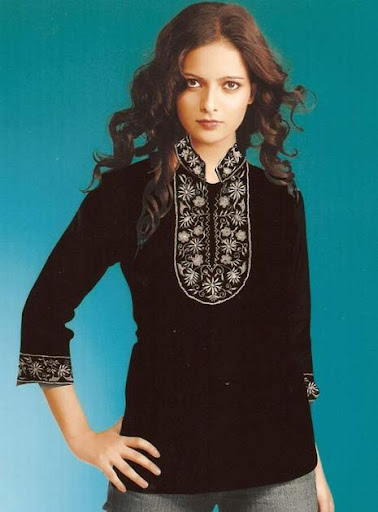fashion for indian women Biogarphy
Source(google.com.pk)The popularity of the salwar kameez has spread so much that even women in villages, who are extremely conservative, have adopted this dress. Various designers have experimented with salwar kameezes to give them different forms and designs. Even foreigners are now wearing salwar kameezes with elan. Todays buyers have hundreds of varities of salwar kameezes available for use. From prints to embroidery, churidars to patialas; there are many designs to choose from. It is truly amazing how this traditional Mughal dress has become so much an indispensible part of our lives.
Salwar kameez is the traditional dress worn by various peoples of south-central Asia. It is the national dress for both men and women in Pakistan and Afghanistan (where they say "shalwar" instead of "salwar"). It is also popular among women in India. Some versions are sometimes called a Punjabi suit, after the Indus valley area called the Punjab
The salwar kameez, or salwar suit, consists of a kameez (shirt) and salwar (trousers).
Salwar are a sort of loose pyjama-like trousers. The legs are wide at the top, and narrow at the bottom. The legs are pleated or gathered into a waistband. There is a drawstring at the top of the waistband to hold up the salwar. The pants can be wide and baggy, or they can be cut quite narrow, on the bias. In the latter case, they are known as churidar.
The kameez is a long shirt or tunic. The side seams (known as the chaak) are left open below the navel, which gives the wearer greater freedom of movement. The word kameez is derived from the Latin camisia (shirt or tunic), from which it probably made its way into various European languages (see chemise) and also into Arabic, the likely immediate source for kameez. The kameez is usually cut straight and flat; older kameez use traditional cuts, as shown in the illustration; modern kameez are more likely to have European-inspired set-in sleeves. The tailor's taste and skill are usually displayed not in the overall cut, but in the shape of the neckline and the decoration of the kameez.
When women wear the salwar kameez, they usually wear a long scarf or shawl called a dupatta around the head or neck. For Muslim women, the dupatta is a less stringent alternative to the chador or burqa (see hijab). For Hindu women (especially those from northern India, where the salwar kameez is most popular), the dupatta is useful when the head must be covered, as in a temple or the presence of elders. For other women, the dupatta is simply a stylish accessory that can be worn over one shoulder or draped around the chest and over both shoulders.
fashion for indian women Photos Pictures Pics Images
fashion for indian women Photos Pictures Pics Images
fashion for indian women Photos Pictures Pics Images

fashion for indian women Photos Pictures Pics Images

fashion for indian women Photos Pictures Pics Images

fashion for indian women Photos Pictures Pics Images

fashion for indian women Photos Pictures Pics Images
fashion for indian women Photos Pictures Pics Images
fashion for indian women Photos Pictures Pics Images

fashion for indian women Photos Pictures Pics Images

fashion for indian women Photos Pictures Pics Images
No comments:
Post a Comment